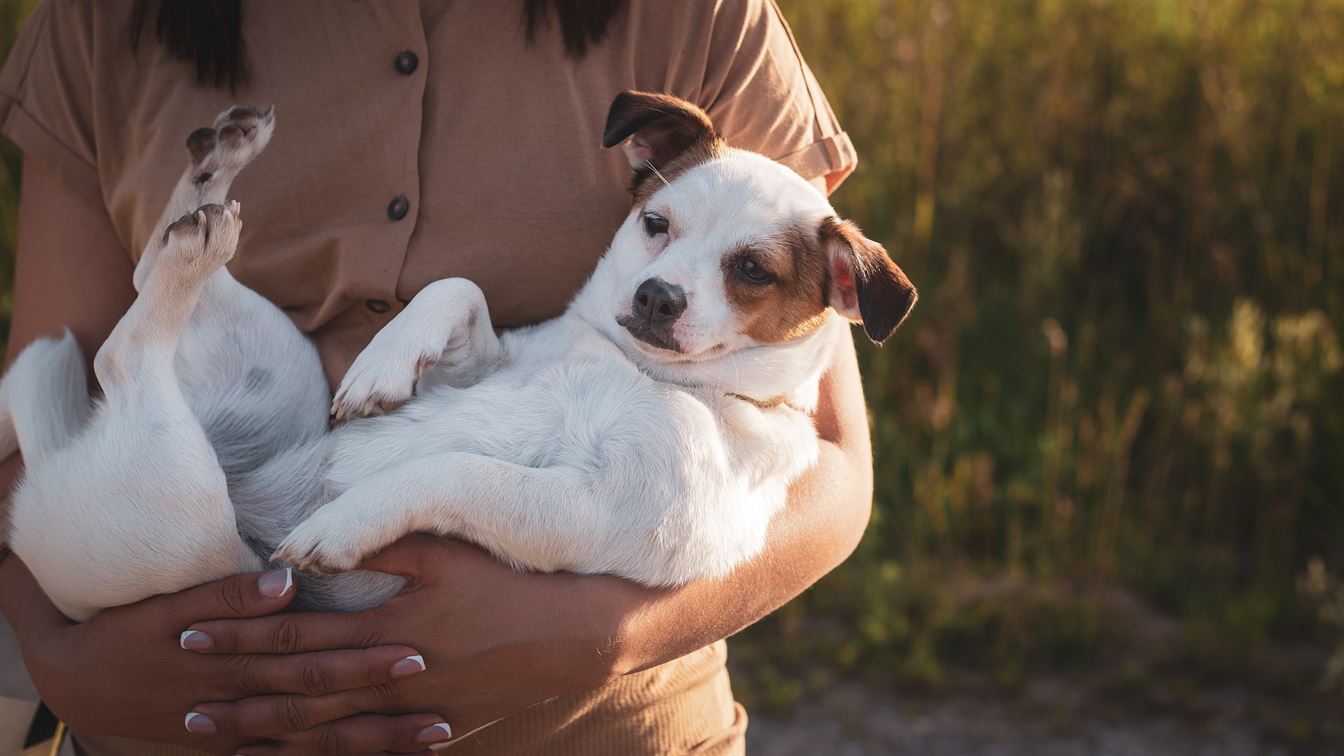How To Train Your Dog On Your Own

One of the rewards of sharing your life with a dog is being able to successfully train your pet. Training sessions are an excellent avenue to bond with your canine buddy, while building and strengthening your relationship with your pet. A well-trained dog has good manners and can understand various important commands.
Dogs of all ages can benefit from learning the basic commands. No dog should be exempted from training even the cutest and the fluffiest ones.
Being pack animals, dogs instinctively form a social hierarchy, with the topmost rung or position occupied by an alpha dog, which is the most dominant in the pack. The rest of the pack looks up to their alpha dog to lead, provide, and protect them. As your dog’s owner, the responsibilities of the alpha dog now rest on your shoulders. One thing that you should always keep in mind is to be conscious of your role as the leader of the pack. There will be instances when your pet dog will try to challenge your leadership but be firm and consistent in maintaining your dominance. A dog that can be dominant even for a short time, is quick to develop undesirable behaviors and can be a challenge to handle.
For first-time pet owners, dog training can feel like a daunting task and may seem to be overwhelming. Indeed, training your dog is an important undertaking. But if you take it slowly, the task would be less intimidating, and you would reap your desired results in no time.
What are the benefits of dog training?
Dogs are known for being smart, intelligent, and highly trainable. When you bring home a new pup, obedience training is always among the top things to accomplish on your to-do list. When a dog heeds basic obedience commands like sit, come, wait, stay, etc. he can easily be controlled which can make him an ideal part of the family. Training is also an excellent way for dogs to gain physical and mental stimulation and prevent boredom.
Basic training regimens for dogs
The basic training regimens that all dogs should undergo include basic obedience commands, housetraining, crate training, leash training, and clicker training.
1. Housetraining (and crate training)
Housetraining or potty training is one of the first training regimens that you and your dog should need to work on. Having a dog that is housetrained can help ensure that you will not be dealing with potty accidents anytime soon. This can be combined with crate training, which is an important tool in housetraining pet dogs. Crate training is also one way to “feed” your dog’s den instincts.
2. Leash training
Leash training is a must for every dog. Aside from leash laws that you may need to conform to, keeping your dog on a leash can give you full control over your pet which is important for his safety.
Leash walks are always something to look forward to. These outdoor excursions are excellent opportunities for endless physical and mental stimulation. Indeed, there’s a whole world out there waiting to be explored by you and your pooch!
3. Socialization
Socialization should start as early as possible. This is an important part of a dog’s development. This means that even when puppies are still with their mother, they should already be undergoing the process of socialization. This involves exposing a puppy or adult dog to different types of people, dogs, and other animals, and various situations that can help them adjust to any unfamiliar or strange situation they may encounter later in life. Socialization continues even when puppies are already brought to their forever homes. Studies have shown that dogs that have undergone proper socialization are less likely to develop behavior issues. Well-socialized dogs are also less prone to developing fears and phobias.
4. Clicker training
Clicker training involves teaching your dog specific commands (both basic and advanced) and tricks using positive reinforcement. It uses a clicker to mark the desired behavior before a treat is given. There may be a need for a professional animal behaviorist to deal with behavioral problems such as displays of aggressive behavior, excessive barking, chasing, destructive behavior, phobias, etc.
7 Basic commands every dog should know
Learning basic commands can give your canine buddy structure. It keeps them well-behaved and safe. It is also an important tool in overcoming common dog behavior problems. The 7 basic commands that every dog must know include the following:
Sit
This is usually the first basic command that a puppy or dog is taught. It is also one of the easiest. It is an important command that can help a dog respond to other training regimens.
Down (Lay down)
This command is especially useful, particularly for large dogs. A dog that is comfortable staying down when told to do so can be taken to the park or other public places.
Stay (and sit down)
Did you know that a dog can be trained to “stay” and ˜sit down” for up to half an hour or more?
Come
This is an essential command. It can help ensure that your dog will come each time you call. The “come” command can be a lifesaver to protect your dog from encounters with other dogs, from going into a neighbor’s yard, or from rushing into oncoming traffic.
Off
Your dog should learn the difference between the “down” and “off” commands. A dog is given the “off” command to teach him that jumping up on people or furniture is not acceptable.
Don’t touch (Leave it)
Teach your dog to let go of objects in his mouth or that he is playing with when you issue the “don’t touch” or “leave it” command.
Heel or controlled walking
A dog that keeps on pulling on his leash can pose a risk to the person who is on the other end of the leash. Teach your dog to walk by your side during leash walks, not in front of you, or lagging.
Top training tips from the experts
- Choose a short name for your puppy, preferably one that ends with a strong consonant. This will make it easier for you to say his name and for your pooch to hear it clearly. Even if you have adopted an adult dog, it is still possible to change his name. Sometimes, a new name offers a fresh start for a dog that has experienced abuse and neglect.
- Training sessions should be in a room or an area in your home which is quiet and without any distractions.
- Dogs have short attention spans, so it is recommended that training should be broken down into short regular sessions to prevent overwhelming your dog.
- Always arm yourself with tons of patience. Like humans, dogs differ in their rate of learning. Some dogs can get it right away, while others will take some time.
- Make training sessions positive experiences for your pet with lots of his favorite treats, lavish praise, belly rubs, and other forms of positive reinforcement.
- Before bringing home the newest furry addition to your household, you should have established house rules already. Since training starts the day your pup arrives, you will already know what he can and can’t do. For example, what parts of your home are off-limits to your dog? Is he allowed on your couch or bed? Will he be allowed to stay near the dining table during mealtimes? With proper training and consistency, pet dogs will be able to know what’s acceptable and what’s not. Having rules settled beforehand can help avoid confusion for you and your canine friend.
- Set up a room for your new pup. Dogs are den animals and having a room or a crate where he will feel safe and comfortable is the best way to meet this need. His “den” is a place to retreat to when he becomes overwhelmed by everything new and unfamiliar that he is dealing with during the transition period. The privacy that he gets while inside his room or crate can make him less anxious and more confident, which is important during the adjustment period.
- Consistency is important during dog training. Constant repetition is a great way to reinforce what your puppy has learned.
- If you are dealing with undesirable behavior, be sure you are not contributing to its development by intentionally or unintentionally reinforcing the habit.
- Always end your dog’s training sessions on a positive note. Offer him a treat, lots of praise, or extended playtime. This can make training sessions something to look forward to.
This is what every pet owner should know— training a dog is a continuous process. Working on obedience training never stops. It is just like learning a new language in people. When you stop speaking it, you tend to forget much of it. There is a need to keep your dog refreshed even with the most basic commands and tricks.







